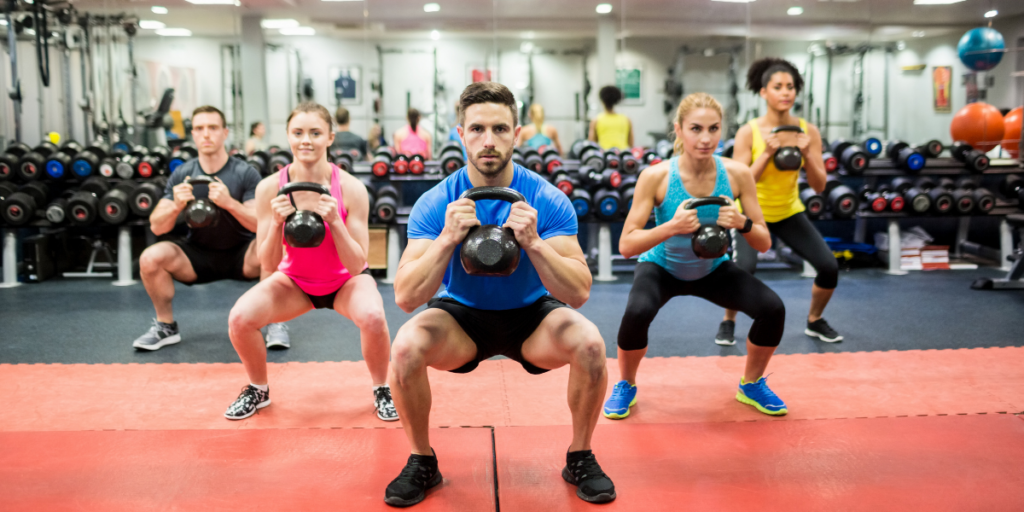No products in the cart.
The Best Functional Strength Training: 12-Week Workout Plan

Trying to look for a best functional strength training but don’t know how? This 12-week workout plan will help you to achieve your goals!
Each of us faces physical tests with regular daily activities. Whether it’s something as simple as carrying an armload of firewood into the house or mowing the lawn with a push mower, we all require a certain amount of basic functional strength to get the job done. There are also tasks that push us to our limit, like when we help a friend or family member move from one home to another. Completing real-world chores requires real-world strength.
Here is a functional strength 12-week training program starts with basic exercises and progresses.
Best Functional Strength Training: 12-Week Workout Plan
| Week 1-3 | |||
| Day | Exercise | Sets | Reps |
| 1 | Pull-up | 2-3 | 10 |
| 1 | Bodyweight Squat | 2-3 | 10 |
| 1 | Stability Ball Push-up | 2-3 | 10 |
| 1 | Static Lunge | 2-3 | 10 |
| 1 | Plank | 3 | 30 second hold |
| 2 | Inverted Row | 2-3 | 9 |
| 2 | Step-up | 2-3 | 9 |
| 2 | Dips | 2-3 | 9 |
| 2 | Side Lunge | 2-3 | 11 |
| 3 | Farmer Walk | 2 | 50-75 ft |
| 3 | Overhead Press | 2 | 9 |
| 3 | Bodyweight Squat | 2 | 9 |
| 3 | Side Plank | 2 | 30 second hold each side |
| Week 4-6 | |||
| Day | Exercise | Sets | Reps |
| 1 | Pull-up | 2-3 | 8 |
| 1 | Walking Lunge | 2-3 | 8 |
| 1 | Overhead Press | 2-3 | 8 |
| 1 | Dumbbell Step-up | 2-3 | 8 |
| 1 | Side Plank | 2 | 30 second hold each side |
| 2 | Weighted Push-up | 2 | 7 |
| 2 | Barbell Squat | 2 | 7 |
| 2 | Inverted Row | 2 | 7 |
| 2 | Reverse Lunge | 2 | 7 |
| 3 | Deadlift | 3 | 6 |
| 3 | Farmer Walk | 3 | 40-50 ft |
| 3 | Plank | 3 | 30 second hold |
| Week 7-9 | |||
| Day | Exercise | Sets | Reps |
| 1 | Barbell Clean | 2 | 7 |
| 1 | Kettlebell Swing | 2 | 7 |
| 1 | Jump Squat | 2 | 7 |
| 1 | Chin-up | 2 | 7 |
| 2 | Deadlift | 2 | 7 |
| 2 | Push Press | 2 | 7 |
| 2 | Kettlebell Goblet Squat | 2 | 7 |
| 2 | Plank | 3 | 30 second hold |
| Week 10-12 | |||
| 1 | Kettlebell Turkish Get-up | 2 | 6 |
| 1 | Barbell or Dumbbell Snatch | 2 | 6 |
| 1 | Lunge with Overhead Press | 2 | 6 |
| 1 | Farmer Walk | 2 | 70-100 ft |
| 2 | Sled Push | 2 | 50-100 ft |
| 2 | Dumbbell or Kettlebell Clean | 2 | 6 |
| 2 | Single Leg Dumbbell Row | 2 | 6 |
| 2 | Static Lunge with Dumbbell Twist | 2 | 6 |
Training guidelines:
- Warm up for 5 to 10 minutes with light full-body movements before starting your lifts. Cool-down for 5 to 10 minutes with some dynamic stretching exercises after completing your session
- Take a one-minute break between each set, and two to three minutes between exercises. However, the training program can be converted to a HIIT circuit at any time by simply decreasing the resistance and performing one set of each exercise followed by a one-minute rest. Increase the number of sets if needed so that the total duration of the session lasts 15 to 30 minutes.
- Start with a resistance that will allow you to complete every repetition with precise technique. Increase the resistance for each exercise up to the next increment as soon as you can complete the final set without straining on the last repetition.
- Make sure to drink frequently enough to stay adequately hydrated throughout the session.
- Do not perform this training plan on consecutive days; allow a minimum of 48 hours between workouts for muscle repair and recovery.
- Consult with a certified professional if you have not used a piece of equipment or performed a movement listed in the training plan before attempting the exercise. You can interchange barbells, dumbbells, and kettlebells as necessary.
- Injury prevention is another crucial issue that functional strength training helps to address. A comprehensive functional strength training plan should use as many multi-joint and full-body exercises as possible.
Functional strength used to be a fitness industry buzz phrase, defined in a variety of ways. Functional strength training can also be tailored to individual sports and recreational pursuits. Functional strength training’s primary purpose is developing the mobility, power, endurance, and flexibility that translates to movements performed throughout everyday life. Functional strength training also improves coordination and balance, which is especially important for tasks requiring awkward body positions.
Functional training will help counteract the effects of muscle mass and strength losses that result from the normal aging process. Muscle imbalances and core weakness can also be reduced or eliminated by regularly performing functional strength exercises. Functional strength training will help you build a robust and fit body to meet the physical challenges of the everyday world.
